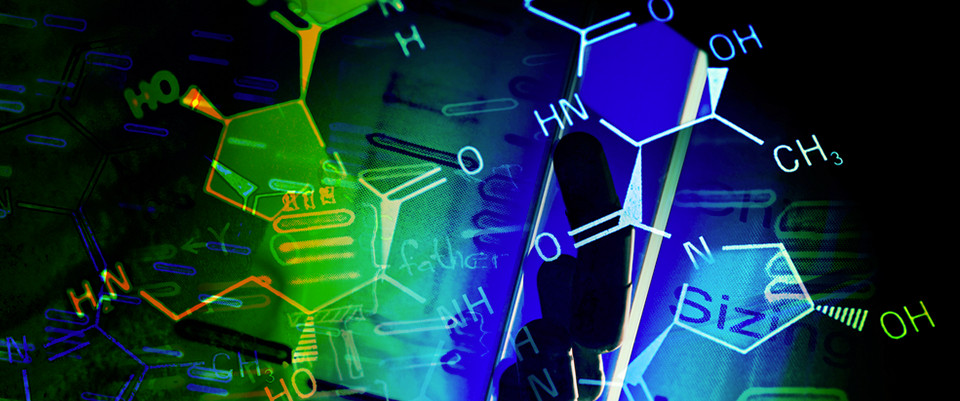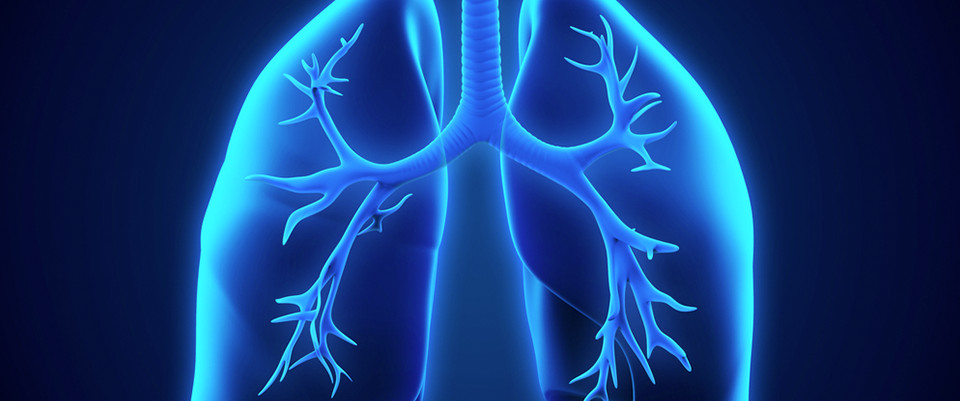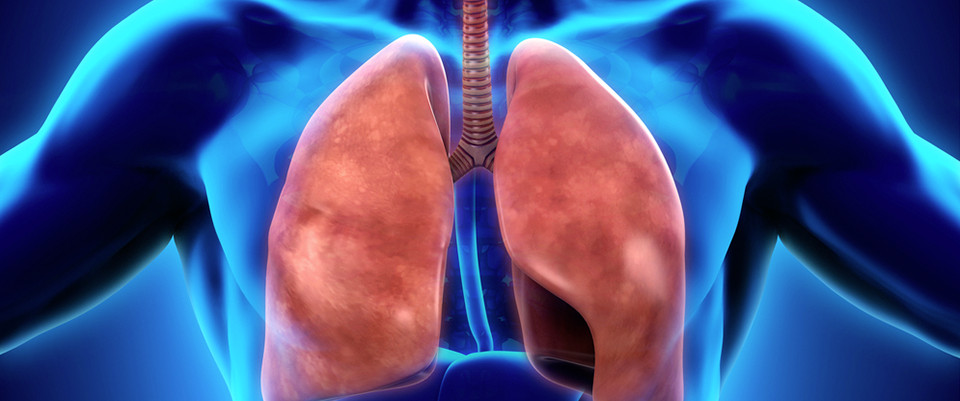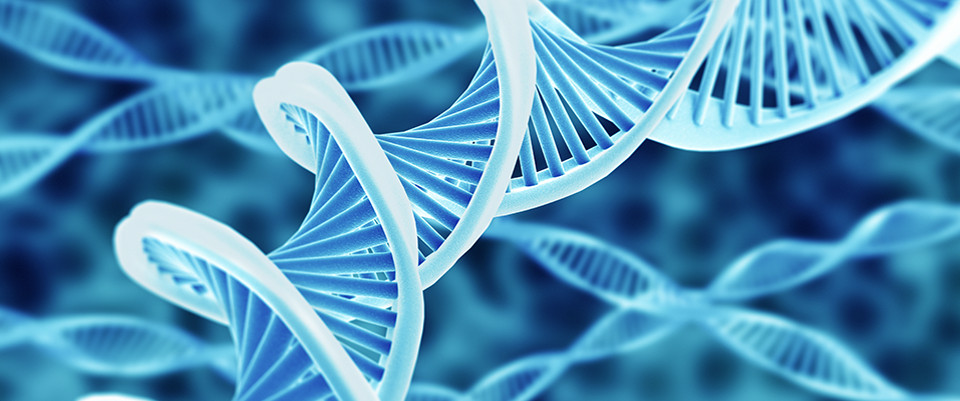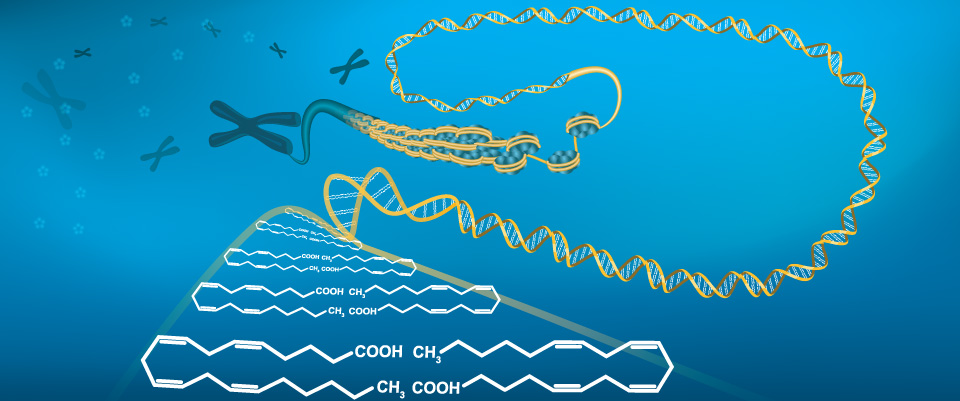PubMed
Integrative proteomics and metabolomics analysis reveals the toxicity of cationic liposomes to human normal hepatocyte cell line L02.
Integrative proteomics and metabolomics analysis reveals the toxicity of cationic liposomes to human normal hepatocyte cell line L02.
Mol Omics. 2018 Sep 24;:
Authors: Yu J, Chen J, Zhao H, Gao J, Li Y, Li Y, Xue J, Dahan A, Sun D, Zhang G, Zhang H
Abstract
Cationic liposomes (CLs) are vital nonviral vectors with a wide range of applications. Although the toxicity of CLs is far lower than that of viral vectors, increasing evidence suggests that there are limited clinical applications of CLs because of their potential toxicity. In the present study, the toxicity of CLs toward L02 cells was investigated and comprehensively analyzed based on proteomics and metabolomics data. Using quantitative iTRAQ-LC-MS/MS proteomics coupled with UHPLC-Q-TOF-MS based metabolomics, we determined that exposure to CLs generated 90 significantly altered proteins and 65 altered metabolites in cells. Metabolomic analysis also showed significant alterations in metabolic pathways, including small molecules involved in energy and lipid metabolism. Proteomics revealed that exposure to CLs significantly influenced multiple proteins, including those involved in the folding of proteins and metabolism. Furthermore, the proteins participated in oxidative stress, which also influenced lipid metabolism. Overall, our findings indicate that high-throughput metabolomics and proteomics can provide insight into the toxicological mechanisms of CLs using high-resolution mass spectrometry. To our knowledge, this is the first study combining proteomics and metabolomics to investigate the potential effects of CLs on any cells. Specifically, we integrated quantitative iTRAQ-based proteomics with UHPLC-Q-TOF-MS-based metabolomics datasets to comprehensively assess the potential mechanisms of CL toxicity towards L02 cells.
PMID: 30247494 [PubMed - as supplied by publisher]
Differences in the Gut Microbiota Establishment and Metabolome Characteristics Between Low- and Normal-Birth-Weight Piglets During Early-Life.
Related Articles
Differences in the Gut Microbiota Establishment and Metabolome Characteristics Between Low- and Normal-Birth-Weight Piglets During Early-Life.
Front Microbiol. 2018;9:1798
Authors: Li N, Huang S, Jiang L, Wang W, Li T, Zuo B, Li Z, Wang J
Abstract
Low-birth-weight (LBW) piglets are at a high-risk for postnatal growth failure, mortality, and metabolic disorders later in life. Early-life microbial exposure is a potentially effective intervention strategy for modulating the health and metabolism of the host. Yet, it has not been well elucidated whether the gut microbiota development in LBW piglets is different from their normal littermates and its possible association with metabolite profiles. In the current study, 16S rRNA gene sequencing and metabolomics was used to investigate differences in the fecal microbiota and metabolites between LBW and normal piglets during early-life, including day 3 (D3), 7 (D7), 14 (D14), 21 (D21, before weaning), and 35 (D35, after birth). Compared to their normal littermates, LBW piglets harbored low proportions of Faecalibacterium on D3, Flavonifractor on D7, Lactobacillus, Streptococcus, and Prevotella on D21, as well as Howardella on D21 and D35. However, the abundance of Campylobacter on D7 and D21, Prevotella on D14 and D35, Oscillibacter and Moryella on D14 and D21, and Bacteroides on D21 was significantly higher in LBW piglets when compared with normal piglets. The results of the metabolomics analysis suggested that LBW significantly affected fecal metabolites involved in fatty acid metabolism (e.g., linoleic acid, α-linolenic acid, and arachidonic acid), amino acid metabolism (e.g., valine, phenylalanine, and glutamic acid), as well as bile acid biosynthesis (e.g., glycocholic acid, 25-hydroxycholesterol, and chenodeoxycholic acid). Spearman correlation analysis revealed a significant negative association between Campylobacter and N1-acetylspermine on D7, Moryella and linoleic acid on D14, Prevotella and chenodeoxycholic acid on D21, and Howardella and phenylalanine on D35, respectively. Collectively, LBW piglets have a different gut bacterial community structure when compared with normal-birth-weight (NBW) piglets during early-life, especially from 7 to 21 days of age. Also, a distinctive metabolic status in LBW piglets might be partly associated with the altered intestinal microbiota. These findings may further elucidate the factors potentially associated with the impaired growth and development of LBW piglets and facilitate the development of nutritional interventions.
PMID: 30245669 [PubMed]
Acetate Production from Glucose and Coupling to Mitochondrial Metabolism in Mammals.
Related Articles
Acetate Production from Glucose and Coupling to Mitochondrial Metabolism in Mammals.
Cell. 2018 Sep 17;:
Authors: Liu X, Cooper DE, Cluntun AA, Warmoes MO, Zhao S, Reid MA, Liu J, Lund PJ, Lopes M, Garcia BA, Wellen KE, Kirsch DG, Locasale JW
Abstract
Acetate is a major nutrient that supports acetyl-coenzyme A (Ac-CoA) metabolism and thus lipogenesis and protein acetylation. However, its source is unclear. Here, we report that pyruvate, the end product of glycolysis and key node in central carbon metabolism, quantitatively generates acetate in mammals. This phenomenon becomes more pronounced in the context of nutritional excess, such as during hyperactive glucose metabolism. Conversion of pyruvate to acetate occurs through two mechanisms: (1) coupling to reactive oxygen species (ROS) and (2) neomorphic enzyme activity from keto acid dehydrogenases that enable function as pyruvate decarboxylases. Further, we demonstrate that de novo acetate production sustains Ac-CoA pools and cell proliferation in limited metabolic environments, such as during mitochondrial dysfunction or ATP citrate lyase (ACLY) deficiency. By virtue of de novo acetate production being coupled to mitochondrial metabolism, there are numerous possible regulatory mechanisms and links to pathophysiology.
PMID: 30245009 [PubMed - as supplied by publisher]
Integrated Pharmacodynamic Analysis Identifies Two Metabolic Adaption Pathways to Metformin in Breast Cancer.
Related Articles
Integrated Pharmacodynamic Analysis Identifies Two Metabolic Adaption Pathways to Metformin in Breast Cancer.
Cell Metab. 2018 Sep 12;:
Authors: Lord SR, Cheng WC, Liu D, Gaude E, Haider S, Metcalf T, Patel N, Teoh EJ, Gleeson F, Bradley K, Wigfield S, Zois C, McGowan DR, Ah-See ML, Thompson AM, Sharma A, Bidaut L, Pollak M, Roy PG, Karpe F, James T, English R, Adams RF, Campo L, Ayers L, Snell C, Roxanis I, Frezza C, Fenwick JD, Buffa FM, Harris AL
Abstract
Late-phase clinical trials investigating metformin as a cancer therapy are underway. However, there remains controversy as to the mode of action of metformin in tumors at clinical doses. We conducted a clinical study integrating measurement of markers of systemic metabolism, dynamic FDG-PET-CT, transcriptomics, and metabolomics at paired time points to profile the bioactivity of metformin in primary breast cancer. We show metformin reduces the levels of mitochondrial metabolites, activates multiple mitochondrial metabolic pathways, and increases 18-FDG flux in tumors. Two tumor groups are identified with distinct metabolic responses, an OXPHOS transcriptional response (OTR) group for which there is an increase in OXPHOS gene transcription and an FDG response group with increased 18-FDG uptake. Increase in proliferation, as measured by a validated proliferation signature, suggested that patients in the OTR group were resistant to metformin treatment. We conclude that mitochondrial response to metformin in primary breast cancer may define anti-tumor effect.
PMID: 30244975 [PubMed - as supplied by publisher]
Nutrition and prevention of cognitive impairment.
Related Articles
Nutrition and prevention of cognitive impairment.
Lancet Neurol. 2018 Sep 20;:
Authors: Scarmeas N, Anastasiou CA, Yannakoulia M
Abstract
Nutrition is an important lifestyle factor that can modify the risk of future cognitive impairment and dementia. Some, but not conclusive, evidence (mostly from observational studies and infrequently from clinical trials) exists of a protective association between certain nutrients (eg, folate, flavonoids, vitamin D, and certain lipids) or food groups (eg, seafood, vegetables, and fruits, and potentially moderate alcohol and caffeine consumption) and cognitive outcomes in older people. For some nutrients and food groups, protection might be greater in individuals with either deficiencies in certain nutrients or a genetic predisposition to cognitive impairment. Identification of potentially different associations between such subgroups should be a priority for future research. At present, evidence of an association between nutrition and cognitive outcomes is somehow stronger for healthy dietary patterns, such as the Mediterranean-type diet, than for individual nutrients and food groups, possibly because of the cumulative beneficial effects of the many ingredients in these diets. Multidomain interventions (including a nutrition component) might also hold some promise for the prevention of cognitive impairment and dementia, but their effectiveness is still uncertain. Use of advanced technologies for nutrition assessment (eg, metabolomics and innovative methods of dietary intake assessment) and recently identified biomarkers of nutrition and neurobiological outcomes will be important to achieve this goal.
PMID: 30244829 [PubMed - as supplied by publisher]
Breath volatolomics for diagnosing chronic rhinosinusitis.
Related Articles
Breath volatolomics for diagnosing chronic rhinosinusitis.
Int J Nanomedicine. 2018;13:4661-4670
Authors: Broza YY, Braverman I, Haick H
Abstract
Purpose: Chronic rhinosinusitis (CRS) is one of the most common chronic diseases treated by primary care physicians. It is increasingly recognized that CRS and nasal polyposis (NP) comprise several disease processes with diverse causes. Hence, subgroups of sinusitis need to be differentiated so that patients can be screened appropriately and personalized medical treatment provided.
Patients and methods: To address this need, we use a cross-reactive nanoarray based on either molecularly modified gold nanoparticles or molecularly modified single-walled carbon nanotubes, combined with pattern recognition for analyzing breath samples. Breath samples were collected from three groups of volunteers (total 71) at the Hillel Yaffe Medical Center: CRS, NP, and control.
Results: Nanoarray results discriminated between patients with sinusitis and the control group with 87% sensitivity, 83% specificity, and 85% accuracy. The system also discriminated well between the subpopulations: 1) CRS vs control (76% sensitivity, 90% specificity); 2) CRS vs NP (82% sensitivity, 71% specificity); and 3) NP vs control (71% sensitivity, 90% specificity).
Conclusion: This preliminary study shows that a nanoarray-based breath test for screening population for sinusitis-related conditions is feasible.
PMID: 30147315 [PubMed - indexed for MEDLINE]
Spectroscopic methods to analyze drug metabolites.
Related Articles
Spectroscopic methods to analyze drug metabolites.
Arch Pharm Res. 2018 Apr;41(4):355-371
Authors: Yi JJ, Park K, Kim WJ, Rhee JK, Son WS
Abstract
Drug metabolites have been monitored with various types of newly developed techniques and/or combination of common analytical methods, which could provide a great deal of information on metabolite profiling. Because it is not easy to analyze whole drug metabolites qualitatively and quantitatively, a single solution of analytical techniques is combined in a multilateral manner to cover the widest range of drug metabolites. Mass-based spectroscopic analysis of drug metabolites has been expanded with the help of other parameter-based methods. The current development of metabolism studies through contemporary pharmaceutical research are reviewed with an overview on conventionally used spectroscopic methods. Several technical approaches for conducting drug metabolic profiling through spectroscopic methods are discussed in depth.
PMID: 29524156 [PubMed - indexed for MEDLINE]
Systems medicine advances in interstitial lung disease.
Related Articles
Systems medicine advances in interstitial lung disease.
Eur Respir Rev. 2017 Sep 30;26(145):
Authors: Greiffo FR, Eickelberg O, Fernandez IE
Abstract
Fibrotic lung diseases involve subject-environment interactions, together with dysregulated homeostatic processes, impaired DNA repair and distorted immune functions. Systems medicine-based approaches are used to analyse diseases in a holistic manner, by integrating systems biology platforms along with clinical parameters, for the purpose of understanding disease origin, progression, exacerbation and remission.Interstitial lung diseases (ILDs) refer to a heterogeneous group of complex fibrotic diseases. The increase of systems medicine-based approaches in the understanding of ILDs provides exceptional advantages by improving diagnostics, unravelling phenotypical differences, and stratifying patient populations by predictable outcomes and personalised treatments. This review discusses the state-of-the-art contributions of systems medicine-based approaches in ILDs over the past 5 years.
PMID: 28954764 [PubMed - indexed for MEDLINE]
The metabolism and drug-drug interaction potential of the selective prostacyclin receptor agonist selexipag.
Related Articles
The metabolism and drug-drug interaction potential of the selective prostacyclin receptor agonist selexipag.
Xenobiotica. 2018 Jul;48(7):704-719
Authors: Gnerre C, Segrestaa J, Seeland S, Äänismaa P, Pfeifer T, Delahaye S, de Kanter R, Ichikawa T, Yamada T, Treiber A
Abstract
1. The metabolism of selexipag has been studied in vivo in man and the main excreted metabolites were identified. Also, metabolites circulating in human plasma have been structurally identified and quantified. 2. The main metabolic pathway of selexipag in man is the formation of the active metabolite ACT-333679. Other metabolic pathways include oxidation and dealkylation reactions. All primary metabolites undergo subsequent hydrolysis of the sulphonamide moiety to their corresponding acids. ACT-333679 undergoes conjugation with glucuronic acid and aromatic hydroxylation to P10, the main metabolite detected in human faeces. 3. The formation of the active metabolite ACT-333679 is catalysed by carboxylesterases, while the oxidation and dealkylation reactions are metabolized by CYP2C8 and CYP3A4. CYP2C8 is the only P450 isoform catalysing the aromatic hydroxylation to P10. CYP2C8 together with CYP3A4 are also involved in the formation of several minor ACT-333679 metabolites. UGT1A3 and UGT2B7 catalyse the glucuronidation of ACT-333679. 4. The potential of selexipag to inhibit or induce cytochrome P450 enzymes or drug transport proteins was studied in vitro. Selexipag is an inhibitor of CYP2C8 and CYP2C9 and induces CYP3A4 and CYP2C9 in vitro. Also, selexipag inhibits the transporters OATP1B1, OATP1B3, OAT1, OAT3, and BCRP. However, due to its low dose and relatively low unbound exposure, selexipag has a low potential for causing drug-drug interactions.
PMID: 28737453 [PubMed - indexed for MEDLINE]
Mass isotopomer-guided decluttering of metabolomic data to visualize endogenous biomarkers of drug toxicity.
Mass isotopomer-guided decluttering of metabolomic data to visualize endogenous biomarkers of drug toxicity.
Biochem Pharmacol. 2018 Sep 19;:
Authors: Beyoğlu D, Zhou Y, Chen C, Idle JR
Abstract
Metabolomics offers the opportunity to uncover endogenous biomarkers that can lead to metabolic pathways and networks and that underpin drug toxicity mechanisms. A novel protocol is presented and discussed that is applicable to drugs which generate urinary metabolites when administered to mice sensitive to its toxicity. The protocol would not apply to drugs that are not metabolized or eliminated by a different route. Separate stable isotope-labeled and unlabeled drug administration to mice is made together with collection of urines from control animals. Untargeted mass spectrometry-based metabolomic analysis of these three urine groups is conducted in addition to principal components analysis (PCA). In the case of unlabeled acetaminophen and [acetyl-2H3]acetaminophen, each given at a hepatotoxic dose (400 mg/kg i.p.) to the sensitive mouse strain (wild-type 129), the PCA loadings plot showed a distribution of ions in the shape of a "fallen-Y" with the deuterated metabolites in one arm and the paired nondeuterated metabolites in the other arm of the fallen-Y. Ions corresponding to the endogenous toxicity biomarkers sat in the mouth of the fallen-Y. This protocol represents an innovative means to separate endogenous biomarkers from drug metabolites, thereby aiding the identification of biomarkers of drug toxicity. For acetaminophen, increased hepatic oxidative stress, mitochondrial damage, Ca2+ signaling, heme catabolism, and saturation of glucuronidation, together with decreased fatty acid β-oxidation and cellular energy dysregulation were all implied from the discovered biomarkers. The protocol can be applied to other drugs and may now be translated to clinical studies.
PMID: 30243960 [PubMed - as supplied by publisher]
Proteomics, metabolomics and metagenomics for type 2 diabetes and its complications.
Proteomics, metabolomics and metagenomics for type 2 diabetes and its complications.
Life Sci. 2018 Sep 19;:
Authors: Wang N, Zhu F, Chen L, Chen K
Abstract
Type 2 diabetes mellitus (T2DM) is one of the most common diseases of endocrine and metabolic disorders, whose mechanism is still largely unknown. Fortunately, various "omics" tools have been employed to better understand the progression pathologies of T2DM and its complications. More specifically, proteomics, metabolomics and metagenomics have played crucial roles in advancing deeper understanding of the physiological processes and regulatory mechanisms of T2DM, such as regulation of signaling pathways perturbed by glucose levels, intestinal microorganism, and inflammation and so on. By analyzing the dynamic change and modification of proteins, proteomics has become an important tool in biology and medicine. Metabolomic analysis can amplify and quantify metabolites in living organisms to reveal the relative relationship between metabolites and physiological and pathological changes. There are also increasing evidences that the human microbiome, specifically the gastrointestinal microbiome have a potential role in the etiology and pathological outcomes of T2DM and its complications. This article summarized and discussed the recent applications of these "omics" tools in finding biomarkers for T2DM and its complications. We also reviewed employing multiple "omics" to further advance our understanding of this pathology. This review will benefit deeper understanding in new therapeutic and/or diagnostic biological target for the discovery of T2DM and its complications.
PMID: 30243649 [PubMed - as supplied by publisher]
Metabolomics in the Clinic: A Review of the Shared and Unique Features of Untargeted Metabolomics for Clinical Research and Clinical Testing.
Related Articles
Metabolomics in the Clinic: A Review of the Shared and Unique Features of Untargeted Metabolomics for Clinical Research and Clinical Testing.
J Mass Spectrom. 2018 Sep 22;:
Authors: Kennedy AD, Wittmann BM, Evans AM, Miller LAD, Toal DR, Lonergan S, Elsea SH, Pappan KL
Abstract
Metabolomics is the untargeted measurement of the metabolome, which is comprised of the complement of small molecules detected in a biological sample. As such, metabolomic analysis produces a global biochemical phenotype. It is a technology that has been utilized in the research setting for over a decade. The metabolome is directly linked to and is influenced by genetics, epigenetics, environmental factors and the microbiome - all of which affect health. Metabolomics can be applied to human clinical diagnostics and to other fields such as veterinary medicine, nutrition, exercise, physiology, agriculture/plant biochemistry, and toxicology. Applications of metabolomics in clinical testing are emerging, but several aspects of its use as a clinical test differ from applications focused on research or biomarker discovery and need to be considered for metabolomics clinical test data to have optimum impact, be meaningful, and be used responsibly. In this review, we deconstruct aspects and challenges of metabolomics for clinical testing by illustrating the significance of test design, accurate and precise data acquisition, quality control, data processing, n-of-1 comparison to a reference population, and biochemical pathway analysis. We describe how metabolomics technology is integral to defining individual biochemical phenotypes, elaborates on human health and disease, and fits within the precision medicine landscape. Finally, we conclude by outlining some future steps needed to bring metabolomics into the clinical space and to be recognized by the broader medical and regulatory fields.
PMID: 30242936 [PubMed - as supplied by publisher]
Effects of Centella asiatica extract on antioxidant status and liver metabolome of rotenone-treated rats using GC-MS.
Related Articles
Effects of Centella asiatica extract on antioxidant status and liver metabolome of rotenone-treated rats using GC-MS.
Biomed Chromatogr. 2018 Sep 22;:e4395
Authors: Intararuchikul T, Teerapattarakan N, Rodsiri R, Tantisira M, Wohlgemuth G, Fiehn O, Tansawat R
Abstract
Centella asiatica has been used as culinary vegetable or medicinal herb. In this study, hepatoprotective effect of the standardized extract of Centella asiatica (ECa233) in rotenone-treated rats was examined using a GC-MS based metabolomic approach. ECa233 contains >80% triterpenoids with a ratio of madecassoside to asiaticoside of 1.5(±0.5):1. Rats were randomly divided into three groups (with six rats/group): sham negative control, rotenone positive control, and the ECa233 test group. Rats in the ECa233 group received 10 mg/kg ECa233 orally for 20 days, followed by 2.5 mg/kg intraperitoneal rotenone injection to induce toxicity before being sacrificed. Metabolomic analysis showed that supplementation of ECa233 protected rat liver against rotenone toxicity. Pipecolinic acid was one of the most important metabolites; its level was decreased in the rotenone group as compared to control. Supplementation with ECa233 before administration of rotenone raised pipecolinic acid to levels intermediate between controls and rotenone alone. Metabolomics approach also helped discover a possible new genuine epimetabolite in the present work. Antioxidant tests revealed that ECa233 inhibited lipid peroxidation and increased catalase activities in liver tissue.
PMID: 30242859 [PubMed - as supplied by publisher]
Responses to K deficiency and waterlogging interact via respiratory and nitrogen metabolism.
Related Articles
Responses to K deficiency and waterlogging interact via respiratory and nitrogen metabolism.
Plant Cell Environ. 2018 Sep 22;:
Authors: Cui J, Abadie C, Carroll A, Lamade E, Tcherkez G
Abstract
K deficiency and waterlogging are common stresses that can occur simultaneously and impact on crop development and yield. They are both known to affect catabolism, with rather opposite effects: inhibition of glycolysis and higher glycolytic fermentative flux, respectively. But surprisingly, the effect of their combination on plant metabolism has never been examined precisely. Here, we applied a combined treatment (K availability, waterlogging) to sunflower (Helianthus annuus L.) plants under controlled greenhouse conditions, and performed elemental quantitation, metabolomics and isotope analyses at different sampling times. While separate K deficiency and waterlogging caused well-known effects like polyamines production and sugar accumulation, respectively, waterlogging altered K-induced respiration enhancement (via the C5 -branched acid pathway) and polyamine production, and K deficiency tended to suppress waterlogging-induced accumulation of Krebs cycle intermediates in leaves. Furthermore, the natural 15 N/14 N isotope composition (δ15 N) in leaf compounds shows that there was a change in nitrate circulation, with less nitrate influx to leaves under low K availablity combined with waterlogging, and more isotopic dilution of lamina nitrates under high K. Our results show that K deficiency and waterlogging effects are not simply additive, reshape respiration as well as nitrogen metabolism and partitioning, and are associated with metabolomic and isotopic biomarkers of potential interest for crop monitoring.
PMID: 30242853 [PubMed - as supplied by publisher]
Plasma lipid profiling of tissue-specific insulin resistance in human obesity.
Related Articles
Plasma lipid profiling of tissue-specific insulin resistance in human obesity.
Int J Obes (Lond). 2018 Sep 21;:
Authors: van der Kolk BW, Vogelzangs N, Jocken JWE, Valsesia A, Hankemeier T, Astrup A, Saris WHM, Arts ICW, van Greevenbroek MMJ, Blaak EE, DiOGenes consortium
Abstract
BACKGROUND/OBJECTIVES: Obesity-associated insulin resistance (IR) may develop in multiple organs, representing different aetiologies towards cardiometabolic diseases. This study aimed to identify distinct plasma lipid profiles in overweight/obese individuals who show muscle-IR and/or liver-IR.
SUBJECTS/METHODS: Baseline data of the European multicenter DiOGenes project were used (n = 640; 401 women, nondiabetic BMI: 27-45 kg/m2). Muscle insulin sensitivity index (MISI) and hepatic insulin resistance index (HIRI) were derived from a 5-point oral glucose tolerance test. The 140 plasma lipids were quantified by liquid chromatography-mass spectrometry. Linear mixed models were used to evaluate associations between MISI, HIRI and plasma lipids.
RESULTS: MISI was comparable between sexes while HIRI and triacylglycerol (TAG) levels were lower in women than in men. MISI was associated with higher lysophosphatidylcholine (LPC) levels (standardized (std)β = 0.126; FDR-p = 0.032). Sex interactions were observed for associations between HIRI, TAG and diacylglycerol (DAG) lipid classes. In women, but not in men, HIRI was associated with higher levels of TAG (44 out of 55 species) and both DAG species (stdβ: 0.139-0.313; FDR-p < 0.05), a lower odd-chain/even-chain TAG ratio (stdβ = -0.182; FDR-p = 0.005) and a lower very-long-chain/long-chain TAG ratio (stdβ = -0.156; FDR-p = 0.037).
CONCLUSIONS: In overweight/obese individuals, muscle insulin sensitivity is associated with higher plasma LPC concentrations. Women have less hepatic IR and lower TAG than men. Nevertheless, hepatic IR is associated with higher plasma TAG and DAG concentrations and a lower abundance of odd-chain and very-long-chain TAG in women, but not in men. This suggests a more pronounced worsening of plasma lipid profile in women with the progression of hepatic IR.
PMID: 30242234 [PubMed - as supplied by publisher]
High-throughput serum N-glycomics: method comparison and application to study rheumatoid arthritis and pregnancy-associated changes.
Related Articles
High-throughput serum N-glycomics: method comparison and application to study rheumatoid arthritis and pregnancy-associated changes.
Mol Cell Proteomics. 2018 Sep 21;:
Authors: Reiding KR, Bondt A, Hennig R, Gardner RA, O'Flaherty R, Trbojević-Akmačić I, Shubhakar A, Hazes J, Reichl U, Fernandes DL, Pucic-Bakovic M, Rapp E, Spencer DIR, Dolhain R, Rudd P, Lauc G, Wuhrer M
Abstract
N-Glycosylation is a fundamentally important protein modification with a major impact on glycoprotein characteristics such as serum half-life and receptor interaction. More than half of the proteins in human serum are glycosylated, and the relative abundances of protein glycoforms often reflect alterations in health and disease. Several analytical methods are currently capable of analyzing the total serum N-glycosylation in a high-throughput manner.Here we evaluate and compare the performance of three high-throughput released N-glycome analysis methods. Included were hydrophilic-interaction ultra-high-performance liquid chromatography with fluorescence detection (HILIC-UHPLC-FLD) with 2-aminobenzamide labeling of the glycans, multiplexed capillary gel electrophoresis with laser-induced fluorescence detection (xCGE-LIF) with 8-aminopyrene-1-3,6-trisulfonic acid labeling, and matrix-assisted laser desorption/ionization time-of-flight mass spectrometry (MALDI-TOF-MS) with linkage-specific sialic acid esterification. All methods assessed the same panel of serum samples, which were obtained at multiple time points during the pregnancies and postpartum periods of healthy women and patients with rheumatoid arthritis (RA). We compared the analytical methods on their technical performance as well as on their ability to describe serum protein N-glycosylation changes throughout pregnancy, with RA, and with RA disease activity.Overall, the methods proved to be similar in their detection and relative quantification of serum protein N-glycosylation. However, the non-MS methods showed superior repeatability over MALDI-TOF-MS, and allowed the best structural separation of low-complexity N-glycans. MALDI-TOF-MS achieved the highest throughput and provided compositional information on higher-complexity N-glycans. Consequentially, MALDI-TOF-MS could establish the linkage-specific sialylation differences within pregnancy and RA, whereas HILIC-UHPLC-FLD and xCGE-LIF demonstrated differences in α1,3- and α1,6-branch galactosylation. While the combination of methods proved to be the most beneficial for the analysis of total serum protein N-glycosylation, informed method choices can be made for the glycosylation analysis of single proteins or samples of varying complexity.
PMID: 30242110 [PubMed - as supplied by publisher]
Biomarkers of dementia in obstructive sleep apnea.
Related Articles
Biomarkers of dementia in obstructive sleep apnea.
Sleep Med Rev. 2018 Aug 13;:
Authors: Baril AA, Carrier J, Lafrenière A, Warby S, Poirier J, Osorio RS, Ayas N, Dubé MP, Petit D, Gosselin N, Canadian Sleep and Circadian Network
Abstract
Epidemiologic and mechanistic evidence is increasingly supporting the notion that obstructive sleep apnea is a risk factor for dementia. Hence, the identification of patients at risk of cognitive decline due to obstructive sleep apnea may significantly improve preventive strategies and treatment decision-making. Cerebrospinal fluid and blood biomarkers obtained through genomic, proteomic and metabolomic approaches are improving the ability to predict incident dementia. Therefore, fluid biomarkers have the potential to predict vulnerability to neurodegeneration in individuals with obstructive sleep apnea, as well as deepen our understanding of pathophysiological processes linking obstructive sleep apnea and dementia. Many fluid biomarkers linked to Alzheimer's disease and vascular dementia show abnormal levels in individuals with obstructive sleep apnea, suggesting that these conditions share common underlying mechanisms, including amyloid and tau protein neuropathology, inflammation, oxidative stress, and metabolic disturbances. Markers of these processes include amyloid-β, tau proteins, inflammatory cytokines, acute-phase proteins, antioxydants and oxidized products, homocysteine and clusterin (apolipoprotein J). Thus, these biomarkers may have the ability to identify adults with obstructive sleep apnea at high risk of dementia and provide an opportunity for therapeutic intervention. Large cohort studies are necessary to establish a specific fluid biomarker panel linking obstructive sleep apnea to dementia risk.
PMID: 30241998 [PubMed - as supplied by publisher]
metabolomics; +24 new citations
24 new pubmed citations were retrieved for your search.
Click on the search hyperlink below to display the complete search results:
metabolomics
These pubmed results were generated on 2018/09/22PubMed comprises more than millions of citations for biomedical literature from MEDLINE, life science journals, and online books.
Citations may include links to full-text content from PubMed Central and publisher web sites.
metabolomics; +17 new citations
17 new pubmed citations were retrieved for your search.
Click on the search hyperlink below to display the complete search results:
metabolomics
These pubmed results were generated on 2018/09/21PubMed comprises more than millions of citations for biomedical literature from MEDLINE, life science journals, and online books.
Citations may include links to full-text content from PubMed Central and publisher web sites.
Particulate metal exposures induce plasma metabolome changes in a commuter panel study.
Particulate metal exposures induce plasma metabolome changes in a commuter panel study.
PLoS One. 2018;13(9):e0203468
Authors: Ladva CN, Golan R, Liang D, Greenwald R, Walker DI, Uppal K, Raysoni AU, Tran V, Yu T, Flanders WD, Miller GW, Jones DP, Sarnat JA
Abstract
INTRODUCTION: Advances in liquid chromatography-mass spectrometry (LC-MS) have enabled high-resolution metabolomics (HRM) to emerge as a sensitive tool for measuring environmental exposures and corresponding biological response. Using measurements collected as part of a large, panel-based study of car commuters, the current analysis examines in-vehicle air pollution concentrations, targeted inflammatory biomarker levels, and metabolomic profiles to trace potential metabolic perturbations associated with on-road traffic exposures.
METHODS: A 60-person panel of adults participated in a crossover study, where each participant conducted a highway commute and randomized to either a side-street commute or clinic exposure session. In addition to in-vehicle exposure characterizations, participants contributed pre- and post-exposure dried blood spots for 2-hr changes in targeted proinflammatory and vascular injury biomarkers and 10-hr changes in the plasma metabolome. Samples were analyzed on a Thermo QExactive MS system in positive and negative electrospray ionization (ESI) mode. Data were processed and analyzed in R using apLCMS, xMSanalyzer, and limma. Features associated with environmental exposures or biological endpoints were identified with a linear mixed effects model and annotated through human metabolic pathway analysis in mummichog.
RESULTS: HRM detected 10-hr perturbations in 110 features associated with in-vehicle, particulate metal exposures (Al, Pb, and Fe) which reflect changes in arachidonic acid, leukotriene, and tryptophan metabolism. Two-hour changes in proinflammatory biomarkers hs-CRP, IL-6, IL-8, and IL-1β were also associated with 10-hr changes in the plasma metabolome, suggesting diverse amino acid, leukotriene, and antioxidant metabolism effects. A putatively identified metabolite, 20-OH-LTB4, decreased after in-vehicle exposure to particulate metals, suggesting a subclinical immune response.
CONCLUSIONS: Acute exposures to traffic-related air pollutants are associated with broad inflammatory response, including several traditional markers of inflammation.
PMID: 30231074 [PubMed - in process]

